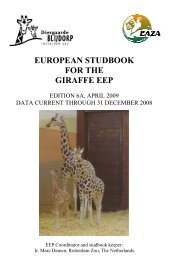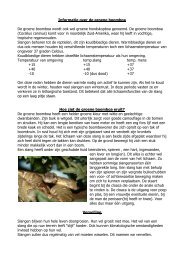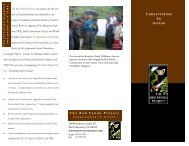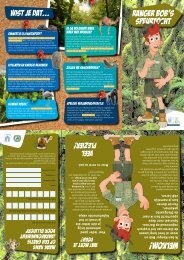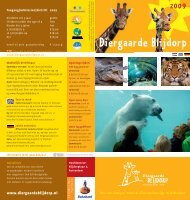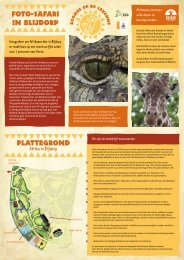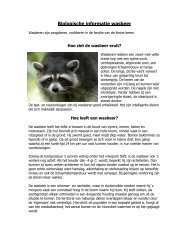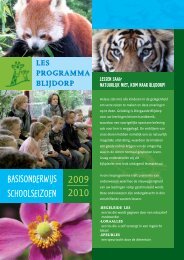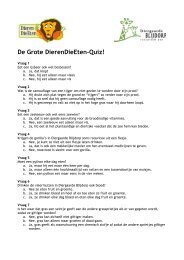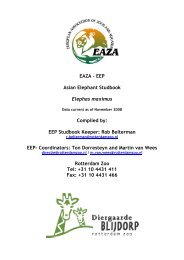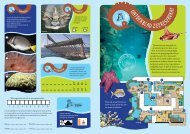Create successful ePaper yourself
Turn your PDF publications into a flip-book with our unique Google optimized e-Paper software.
<strong>EEP</strong> STUDBOOK CROWNED PIGEONS PROLOGUE<br />
There is also a skeleton and reconstructed model in the Mauritius Institute Museum in Port<br />
Louis. Also a model of the dodo can be found in the Museum of Natural History in New York.<br />
But despite the regrettable extinction of the innocent dodo, its memory lives on, not only in<br />
Port Louis Museum, but also in a thousand other places on the island. Nowadays the dodo<br />
figures prominently on the national emblem, propping up the arms of Mauritius with a stiff<br />
left leg. It also appears on coins and paper currency, in club-emblems and on T-shirts and is<br />
the subject of countless souvenirs of Mauritius. Giant dodos have been sculpted in wood and<br />
stone. Precious tiny dodos in gold and diamonds have emerged from the jeweller’s table. The<br />
famous modern Mauritian painter Malcom de Chazal has painted dodos, and his motifs are<br />
converted into hand-woven tapestries. Mauritian ladies, instead of knitting booties, make<br />
patch work dodos, stuff them, and sell them as pin-cushions. Dodos rear their pretty heads on<br />
hand-tooled leather goods. Dodos are delicately re-created out of dried cane-leaves. Even the<br />
chefs of our star studded hotels occasionally come down with dodo fever and may be<br />
discovered secretly chiseling away a dodo ice-sculpture, or shaping the rotund backside of a<br />
dodo moulded in butter. Yes indeed, the dodo is dead, but long live the dodo!<br />
The tragedy of the dodo highlights the potential effects mankind can have upon the<br />
environment, and the ease with which humanity can disrupt the delicate balance of an<br />
ecosystem by eradicating a whole species. As one of the earliest examples of modern<br />
ecovandalism, the impact of the Portuguese sailors on Mauritius not only wiped out the<br />
famous dodo, but it disrupted nature further in unexpected ways.<br />
The Mauritian ‘calvaria’ tree, soon after the dodo bird became extinct, stopped sprouting<br />
seeds, and it appeared it would soon face extinction itself. While it was not initially apparent,<br />
the calvaria would only sprout seeds after having been eaten and digested by the dodo bird.<br />
Some scientists disagree on the connection between dodo and calvaria, but others believe that<br />
the dodo played an integral part in the spreading of calvaria seeds. Turkeys have been given<br />
seeds to digest, and it is believed they can perform a similar role.<br />
This story serves to highlight the dangerous implications of animal extinction, and why<br />
humanity must work to safeguard the environment and nature. The bio-diversity of our world<br />
must be protected, both for current and future generations. The dodo was such a unique<br />
species of a bird, that some three centuries later, it still is remembered as a symbol of the<br />
harm mankind can bring to the environment. As the memory of the dodo and the legacy of<br />
ecovandalism lives on, we must not forget to take heed of such a warning - particularly as<br />
more and more species are brought to the point of extinction.<br />
<strong>Crowned</strong> <strong>pigeon</strong>s can also be easily hunted and could become<br />
“the dodo of the 21st century”.<br />
4



